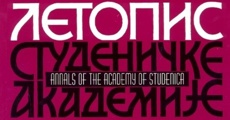| |
Various
scientific associations of biomedical specialties organize numerous
scientific meetings all over the world. These meetings are an
ideal occasion for specialists to exchange information and share
experience, report the newest results of their investigations,
as well as to become acquainted with the results and latest investigations
of others. They are usually organized in attractive locations,
something that additionally draws prospective participants. Having
all that in mind, these meetings are, as a rule, very well attended.
After the convention, however, there is usually a dilemma whether
and why the presented papers should be published
in a scientific journal.
The best way of presenting the results of an investigation to
a wider scientific audience is a scientific paper. Presentations
at scientific meetings are a less formal way of scientific communication1.
Therefore, the primary significance of presenting results of investigation
at scientific meetings is the advantage of delivering scientific
information directly and obtaining simultaneously useful suggestions
from competent experts1. The main shortcoming of presentations
at meetings lies in the fact that scientific information, if presented
only in this way, isn't accessible to the wider
scientific audience. It is heard only by a small number of colleagues,
attending the session, and it can be read in the form of an abstract,
usually printed in a brochure specially prepared for the meeting.
However, even the best extended abstracts, previously reviewed,
cannot offer such information as a scientific paper published
in a journal with an adequate peer reviewing process. This is
the main reason why a paper presented at a scientific meeting
should also be prepared for publishing in a relevant scientific
journal, preferably in English.
The preparation of a paper for publishing, which has already been
presented at a convention, demands certain efforts to conform
the text to strict rules based on the definition of scientific
paper2, particularly regarding detailed methodology, which defines
that investigations can be repeated and conclusions tested. In
contrast to the scientific paper, it is most important for the
presentation at a meeting to be simple and clear, interesting
to the expected audience, and deprived of all details that could
distract attention from the basic point or disrupt the direct
flow from the aim of investigation to the obtained results, commented
only when necessary to draw an adequate conclusion.
Due to the differences between a scientific paper and its presentation
at a meeting, the preparation of the manuscript for publishing
should encompass all the common sections:
(1) Introduction - short introduction to the presentation,
which should not last more than 1-2 minutes for a 10-minutes presentation,
should be adequately enlarged to cover all the relevant aspects
of the problem, define aim(s) of the investigation and state the
hypothesis;
(2) Material and Method(s) - a section that is deprived
of all experimental details in the presentation and trimmed down
to only those necessary for understanding the idea and significance
of the investigation, should be elaborated in detail, regardless
of the size of the chapter, with a precise description of all
the used methods so that they could be repeated by other colleagues;
(3) Results - this segment in the presentation is most
similar to the corresponding section of the written paper, but
it should be completed fully if it was simplified (for poster
presentation), or deprived of comments (as is usual for oral presentation);
(4) Discussion - as a separate section exists only in
the written form of scientific communication which, adequately
interpreting the obtained results, represents a test of logic
consideration4. This section can be ended with conclusions based
on the objective assessment of the obtained results, or the conclusions
may constitute a separate section;
(5) References - they are cited only in a written paper
(although some could accompany a poster presentation), but this
section implies a thorough citation of all mentioned references
in previous segments. When preparing a paper for publishing, it
shouldn't be overlooked that the Summary (Abstract) is
a mini-version of the paper3, and presents a section that is most
widely read (after the title of the paper), which is why it should
be prepared with great consideration, presenting essential points
for understanding the paper. Consequently, the abstract submitted
to the scientific committee prior to the meeting, should be, if
necessary, modified and expanded. Having in mind all the demands
of a written scientific paper, the preparation of a presented
paper for publishing is not a simple task and requires approximately
the same efforts as if it had not been previously presented because
these two forms of communication are quite different. This is
probably the reason why only about 20% of the papers presented
at scientific meetings undergo a publishing process in scientific
journals5. There are also other possible reasons, such as: doubt
that the paper would be accepted for publishing or that the results
might not attract adequate attention, the absence of positive
results of statistical analysis, problems with co-authorship,
etc. However, the most distressing reason is that scientific meetings
are sometimes more of a tourist than of a cognitive nature. Regardless
of the reasons, none can have full verification: a paper
presented at a scientific meeting verifies its value only when
(and if) published in a relevant scientific journal (possibly
in English).
REFERENCES
1. Vučković-Dekić Lj. Kako ja... saopštavam
rad na naučnom skupu. Stom Glas S, 1999; 46:41-46.
2. Hall GM. Structure of a scientific paper. In: Hall GM (ed).
How to write a paper. London: BMJ Publishing Group, 1994, pp 1-5.
3. Day RA. How to Write & Publish a Scientific Paper. 5th Ed.
Phoenix: Oryx Press, 1998, p 29.
4. Todorović Lj. Kako ja… pišem originalni (naučni) rad. Stom
Glas S, 1999; 46:117-123.
5. Weber EJ, Callham ML, Wears RL. Unpublished Research From a
Medical Specialty Meeting. JAMA, 1998; 280:257-259.
|
|

